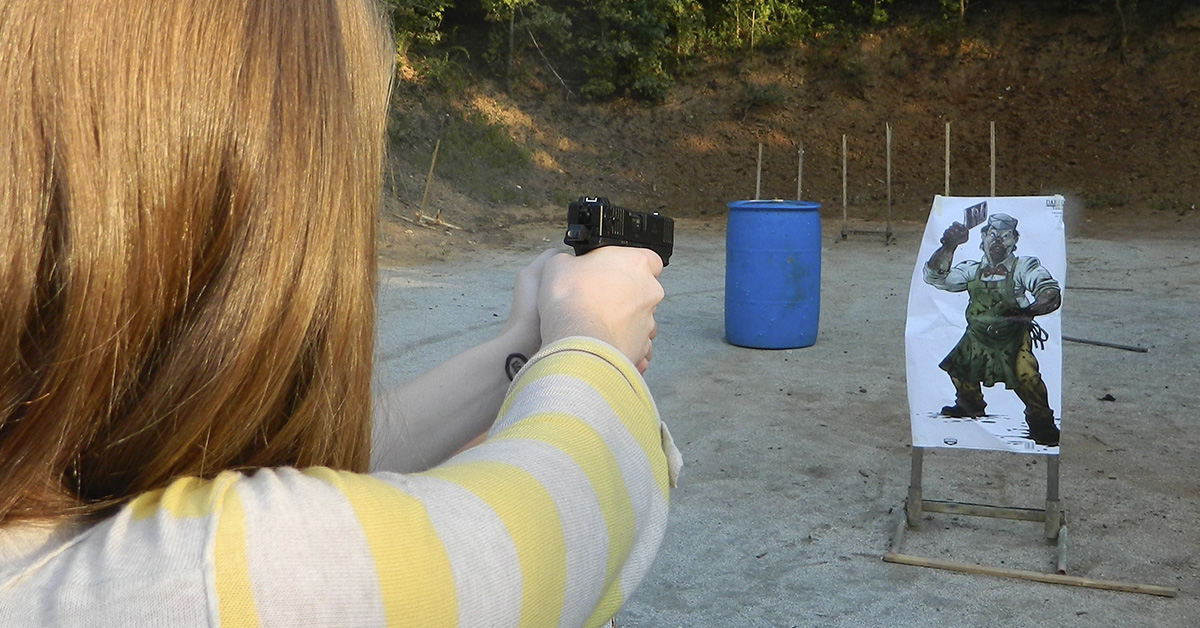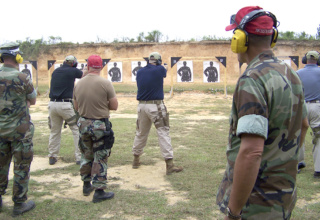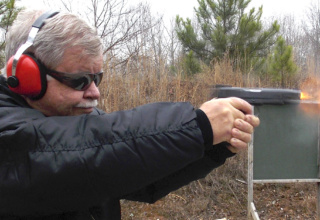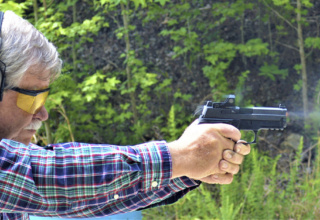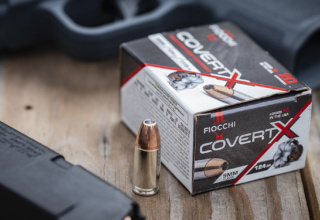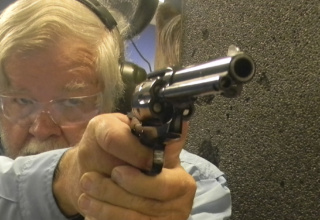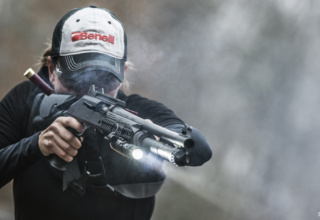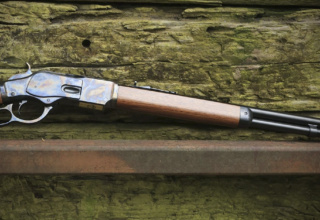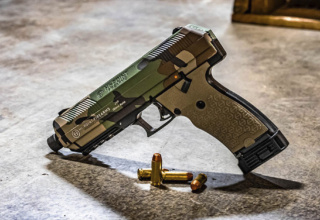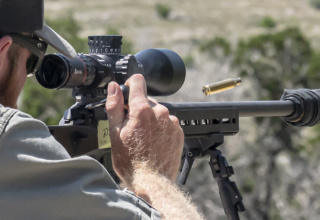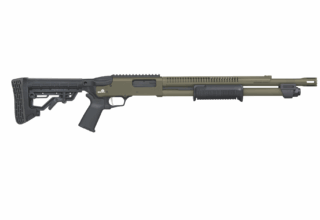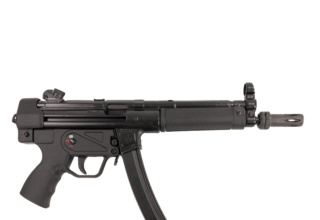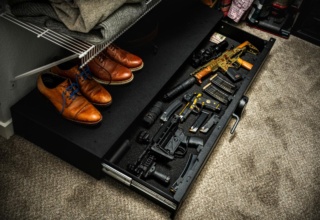A simple, almost innate learning concept can accelerate good shooting form
by Bob Campbell
When a trainer attempts to demonstrate techniques and proper form to a novice, he or she recognizes how difficult it can be to merge different capabilities. To coordinate training, a master may need to slow down a little. Truth be told, even masters of the handgun have weak points somewhere, although each enjoys what they do best — and demonstrating what they do best. An instructor must be able to leave the pulpit and interact with the congregation on any level their experience and education indicates they need help. Human beings can harmonize their movement to a remarkable degree. Most of what we learn is a result of interaction with others. Cooperation in training is essential. Combat is an extraordinary event that may have a critical effect on our lives. We can rehearse this deadly choreography. Those who are at risk should take every opportunity to train and practice.
The basis for cooperation is apparently wired into us. When working toward a common goal, cooperation must exist. Hopefully, a good trainer looks past his paycheck and the student looks past a certificate. A student must have a good attitude but always ask questions. Speech is the favored human communication, but speech is not always the appropriate model for communication in all situations. Skills that require top level coordination are best taught by demonstration. Words may be too clumsy. Non-verbal communication is especially appropriate when the skills being taught require unconscious repetition. Not to mention the crescendo of gunfire on the firing range as we practice!
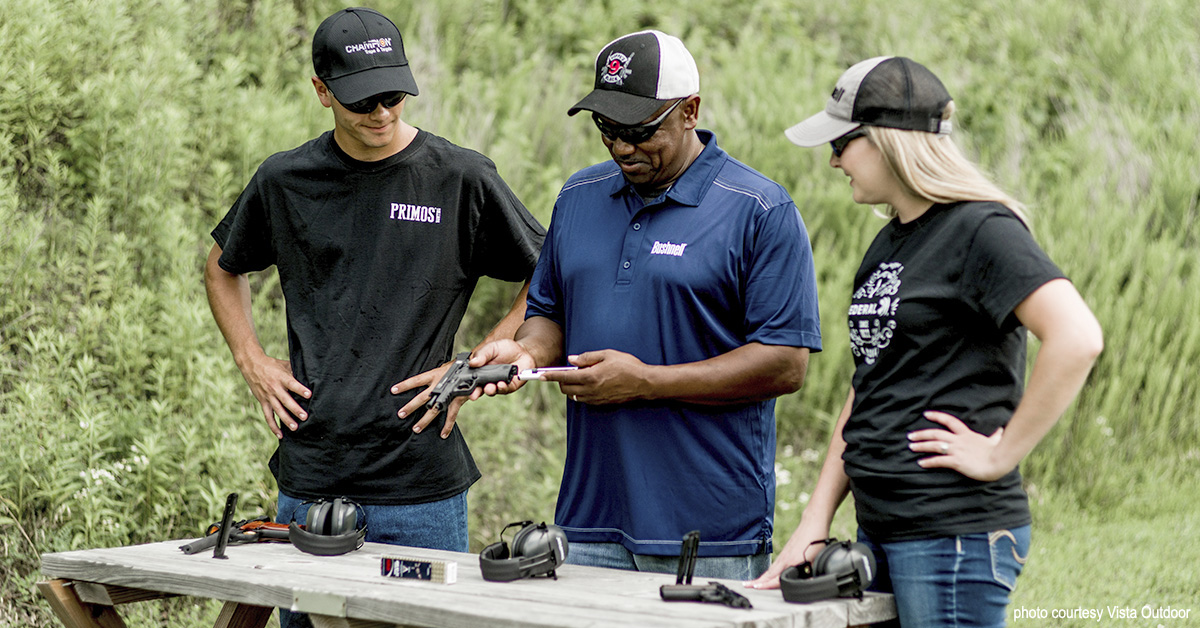
As an example, describing where to look verbally is much slower than simply pointing. Humans quickly pick up another focal point. This facility is sometimes referred to as joint attention. Joint attention is vital to a cooperative effort such as training. A glance often allows us to recognize another’s intent and to mimic their movement. Knowledge of how to perform a drill is one thing but realization comes from actually doing the drill with our own hands. By performing in a mirror image to the instructor, we begin to understand drills and tactics. This interaction often produces a connection between perception and action.
When dining with a friend, have you noticed how often you each reach for a glass at the same time or how you may proceed ahead at a stoplight when the vehicle on your left or right begins to move? (Hopefully you at least glance at the traffic device!)
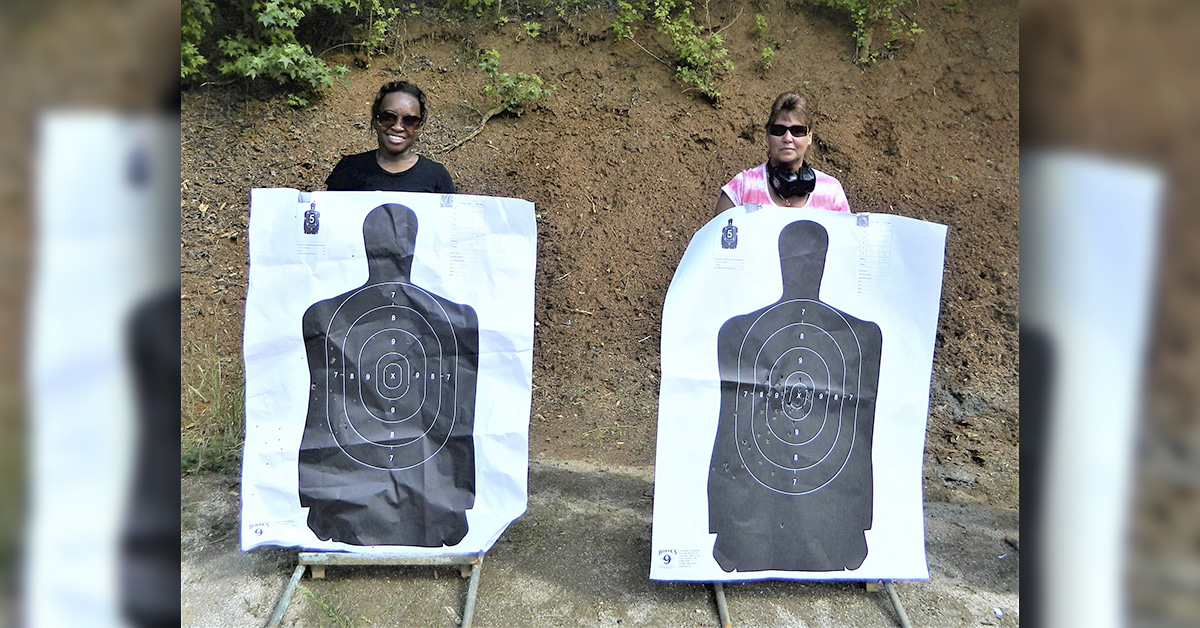
One person’s body movement often mimics the other on a subconscious level. It is termed involuntary impersonation, and it is the basis for children learning language and for adults to learn complex skills. Involuntary impersonation has been fertile ground for insightful comics who have a good understanding of the human condition. Comics often have a shrewd view of life and mimicking is a part of life. A good attitude and relaxed mind are essential for learning. Those with a poor attitude do not proceed well. While police and military have more at stake, poor attitudes are found among these individuals. Hopefully, those paying good money, training on their own time and their own dime, will have a better attitude. Those who have survived a violent attack are often highly motivated.
The desire to copy is often so great we may pick up counterproductive skills. An example may be found in what psychologists call “the first truth.” While usually applied to erroneous perceptions picked up by preschoolers, the term also applies to firearms training. A tabula rasa (unformed mind) is preferred to engraved misconceptions. Point shooting, unsighted fire, and relying upon skills that cannot be demonstrated may be first truths that must be disposed of. Range challenges do not allow such wrong attitudes to survive. Sometimes training is good but different.
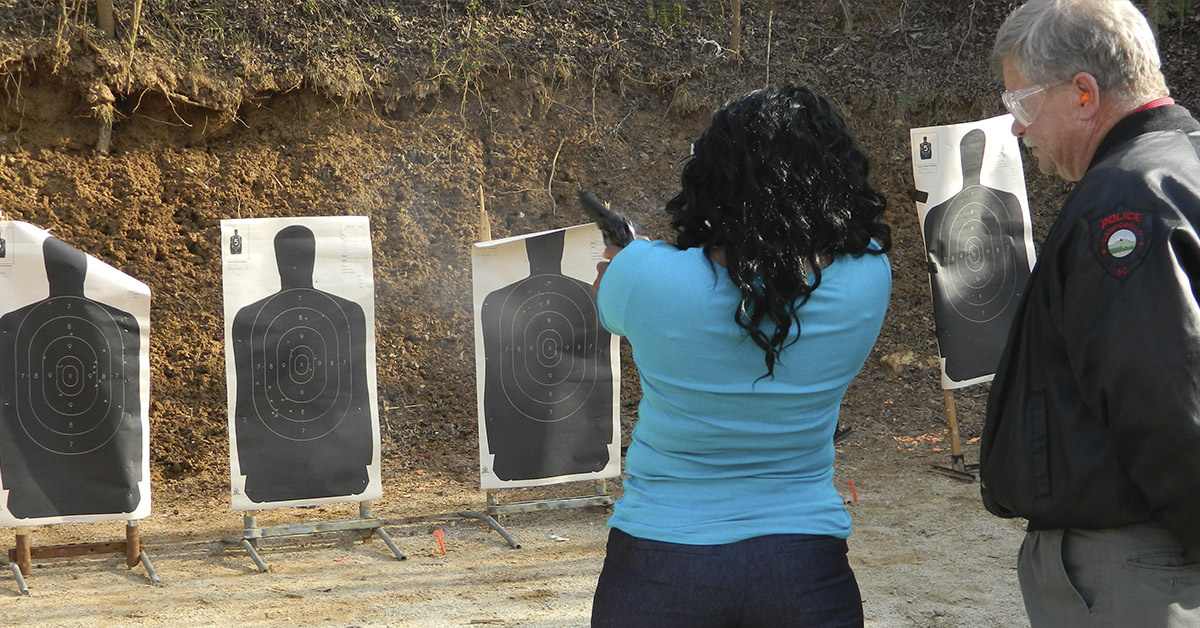
As an example, one of my family members has been engaged in both military and homeland defense training. It is no exaggeration to state that my child learned the Weaver stance with a water pistol! As this young person was indoctrinated into other schools, he has been told the isosceles stance is preferable to the Weaver as it is faster and does not cramp movement along walls. Much of what he has been taught is good, but he has been able to demonstrate considerable proficiency in difficult testing with the Weaver stance. The instructors must nod at his ability. He has encountered dubious tactics that include operating a decocker, safety, or magazine release with the weak hand, and when he asks what to do if the weak hand is disabled, he is met with a blank stare. All training is not good — some just make brass. Official training is often a bore and available simply so we may punch a ticket. When that time comes, make the most of the course.
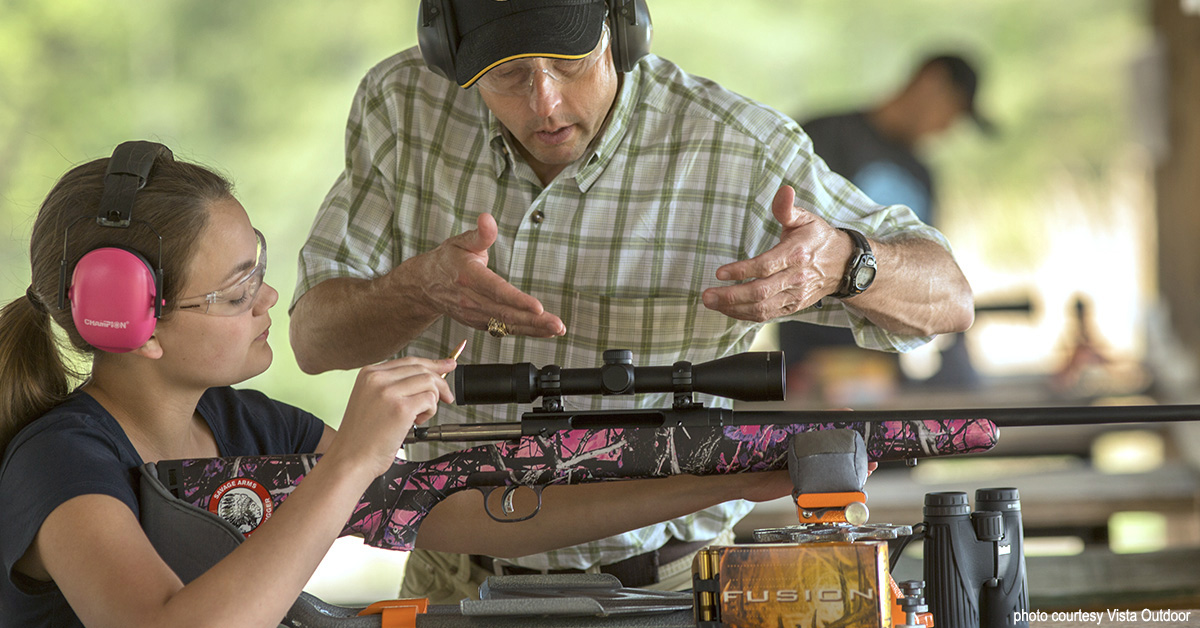
When ready and attempting to understand the basics of marksmanship, it is good to have a range partner. It is probably a bad idea to do range work solo for many reasons. If you cannot attend a shooting school, then you and a partner may engage in mutual mirroring until you get it right — but you must know what right is. The students I best remember for excellence have been those who have engaged in practice with me over several months or years and practiced on a regular basis.
Another consideration in mirror training is focusing on the correct drill. Be certain your partner is performing correctly or you will pick up bad habits. A task approached by two individuals is more easily accomplished. An hour of dual training will prove more beneficial than several hours spent solo. A cooperative relationship in training is vital, but so is a cooperative friend in training. The rules in mirror training are perception, action, and understanding the unconscious cognitive processes. And be realistic.
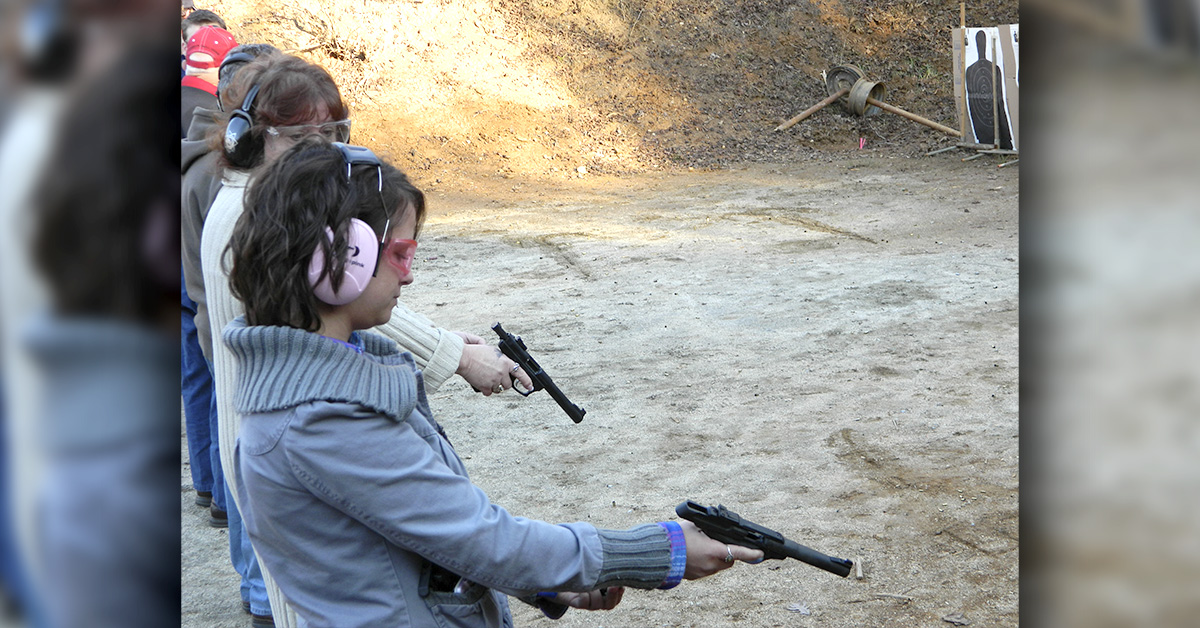
Recently, I was asked my opinion of a course that favored rapid unaimed fire. Now, to fire from chest level quickly at a target a few feet in front of you is one thing. But past seven feet, the sights should be used. This is the flash sight picture. I will stand with Colonel Cooper on this one.
Another component of the course was firing at various colored targets as the instructor yelled, “Orange! Green!” and so on. Unless we are attacked by M&Ms, I fail to see anything of value in this curriculum. It is different, but then different is not always good. I withhold judgment until the unlikely event I attend this class myself; however, mastering the basics and working to achieve skill in real-world scenarios is difficult enough for me. When all my students are at the highest level, perhaps I will relax.
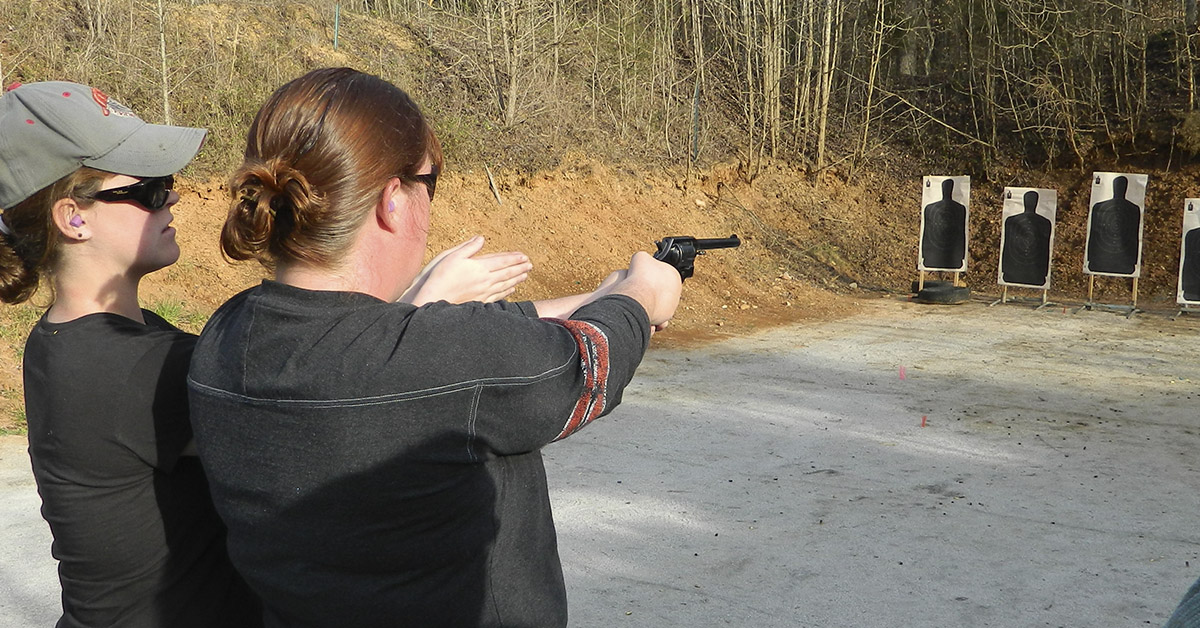
When we approach the many facets of firearms training, keep an open mind. Mirror image training, training by example, and learning by example are cornerstones of a solid marksmanship program. But mirror image may also come in handy when we are trying to use the weak hand. We really should not have a weak side. Just the same, it is a biological and physical fact that the non-dominant side is, at best, operating at seventy-five percent of the strength of the dominant side. If you round a blind corner and the shot is best taken by your “off-side,” are you up to the task? Mirror image therapy is often used after an injury. The injured limb works out with the uninjured side until the injured limb begins to ‘learn’ from the other limb and recovers. This is another type of mirror image training, but a type that may be accomplished solo.
Consider the benefits of mirror image training, whether you are training with an accomplished trainer and shooter or in those cases where mirror image training aids in becoming an ambidextrous shooter. The benefits are many.
